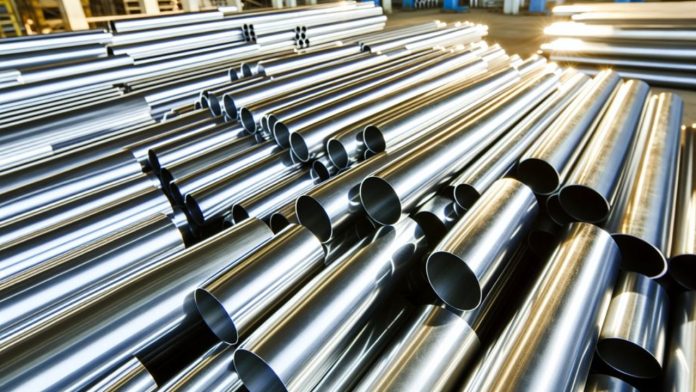The use of steel pipes is important in the diverse industries of plumbing, both domestically and in a heavy industrial environment. There are numerous specifications employed to characterize the steel pipes, and the schedule classifications are among the critical ones. With TUSPIPE as a trusted name in the field of steel piping solutions, customers can choose between Schedule 20 Vs Schedule 40 Wall Thickness Chart steel pipes to fit certain operational needs. This guide scrutinizes the variations in the wall thickness, pressure ratings, weight, and usage conditions, enabling customers to select their project-wise decisions in a good manner.
Understanding Pipe Schedules
Schedule – The thickness (or size) of the wall of a pipe is universally accepted. It is not a direct thickness measurement but a rating that relates the diameter of a pipe, wall thickness, and pressure rating. To name a few common ones, schedule 20 and schedule 40 are two common classifications in the standards of the ASME B36.10. The major difference between the two is the thickness of the walls, which affects such parameters as durability, pressure resistance, weight, and cost.
Schedule 20 Steel Pipe
Schedule 20 steel pipe is thinner with a lesser wall thickness, which makes it light and easy to work with. This kind of pipe is highly applicable where low pressure and minimal weighing are major needs. These are typically used in the residential water system, in light agriculture irrigation, and in the ventilation ducts. Since it takes a lesser amount of material during production, Schedule 20 is usually cheaper compared to the thicker-walled ones. But its thinnest walls restrict its use in high-pressure conditions, a heavy load, or corrosive fluid.
Schedule 40 Steel Pipe
Schedule 40 steel pipe is produced with a thicker wall, which gives greater resistance to inside and outside pressure. It can tolerate pressures of up to 300 or higher PSI, which is the reason it is used in industrial pipelines, fire protective systems, oil and gas distribution systems, as well as structural applications. Although being heavier and therefore slightly more costly than Schedule 20, due to having a longer service life and higher durability, it is in many cases less costly to maintain overall. Since it is also thicker on the 2nd wall, it will be less prone to mechanical strain, bending, and deformation, especially underground or high-impact installations.
Pressure Ratings and Performance
One of the most decisive factors in the option between Schedule 20 and Schedule 40 is pressure capacity. Schedule 20 is applicable in most cases to working pressures of 150-200 PSI, which are sufficient where the use requires light-duty work. On the other hand, the thicker walls allow Schedule 40 a much more significant pressure handling capacity, usually well above 300 PSI. This causes it to become one of the choices in the industry where high-pressure fluid, gases, or steam are pumped, as well as systems that require high-level safety requirements.
Application Scenarios
Which of the two schedules will be used is mostly dependent on the environment under which operations take place. Where the ease of installation, the lower weight, and perhaps a cheaper first cost are factors, e.g., in residential plumbing and non-pressurized ventilation piping, Schedule 20 proves superior. The Schedule 40 is more suitable for industrial weathering requirements, such as oil and gas pipes, chemical processing plants, and fire suppression systems. Also, Schedule 40 is better protected against deformation in conditions where the pipes are underground or facing massive mechanical loading.
Cost and Long-Term Considerations
Schedule 20 pipes are cheaper to install; however, the thinner wall can end up costing more in the long term when subjected to hard use conditions, as it may need replacing more often. Schedule 40 has a higher initial investment, but this is usually countered by its life span and low maintenance. Schedule 20 can be a more cost-effective option when the project is short-term, temporary, and durability is not the priority, whereas the high-demand long-term applications will benefit most from the characteristics of Schedule 40.
Conclusion
TUSPIPE’s product lines of both Schedule 20 and Schedule 40 steel pipes cover both light-duty and heavy-duty usage. Parameters like wall thickness, pressure requirement, the environment, and project budget are some of the factors to be used in deciding between the two. Schedule 20 provides lightweight performance of low-pressure systems, whereas Schedule 40 has heavy performance of high-stress and high-pressure systems. The knowledge of the differences provided in the TUSPIPE wall thickness and pressure guide helps the engineers, contractors, and project managers to choose the best pipe that will deliver consistently, at the right price.











